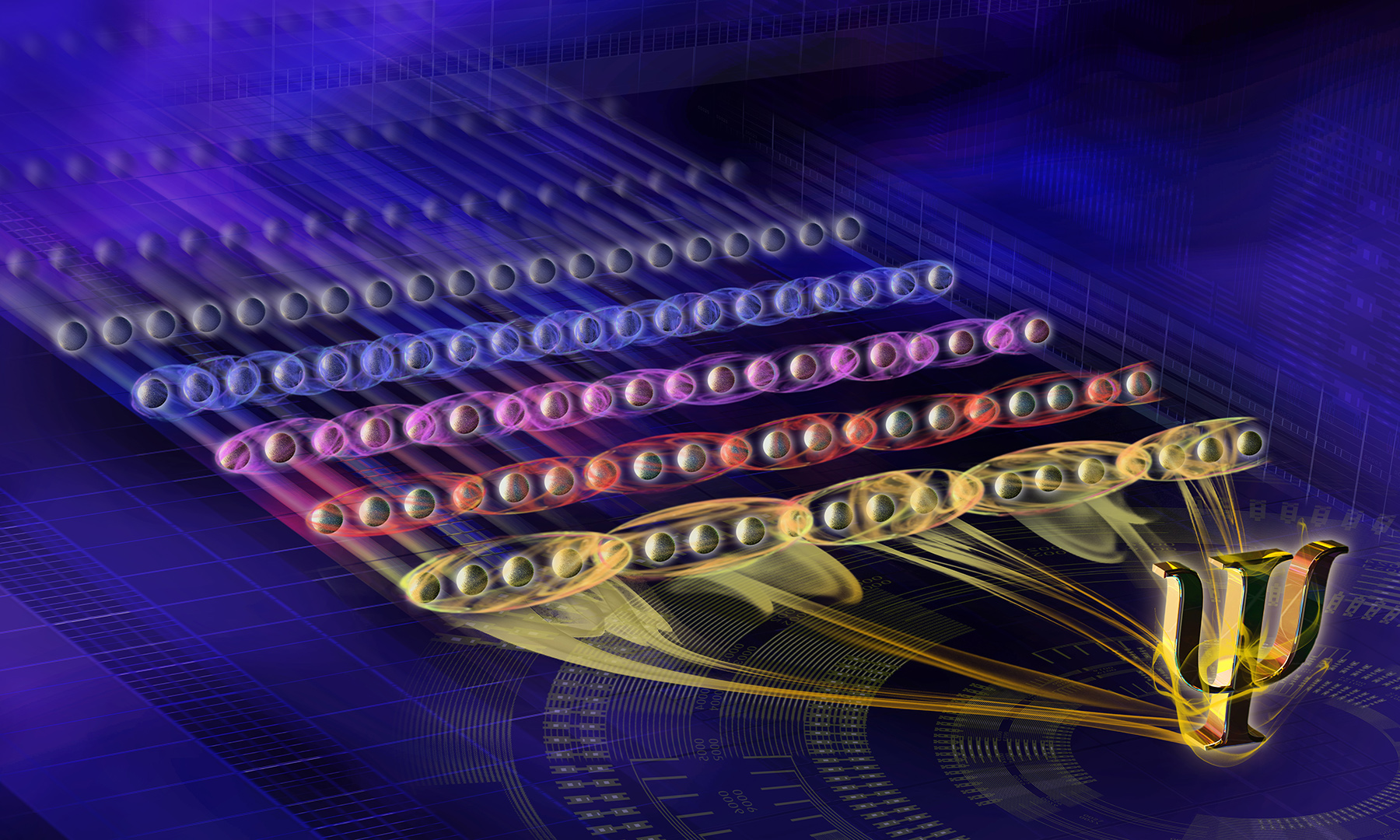If you've
read anything about quantum computers, you may have encountered the statement,
"It's like computing with zero and one at the same time." That's sort
of true, but what makes quantum computers exciting is something spookier:
Entanglement.
A new
quantum device entangles 20 quantum bits together at the same time, making it
perhaps one of the most entangled, controllable devices yet.
This is an
important milestone in the quantum computing world, but it also shows just how
much more work there is left to do before we can realize the general-purpose
quantum computers of the future, which will be able to solve big problems
relating to AI and cybersecurity that classical computers can't.
"We're
now getting access to single-particle-control devices" with tens of
qubits, study author Ben Lanyon from the Institute for Quantum Optics and
Quantum Information in Austria told Gizmodo. Soon "we can get to the level
where we can create super-exotic quantum states and see how they behave in the
lab. I think that's very exciting."
Forget about
"quantum computing" for a second, and just consider the smallest
particles. Particles take on exact values of certain innate properties, the way
coins are either heads or tails. But unlike real coins, you can prepare
particles so they encode both the values of "heads" and
"tails", each with some complex number (like a+bi) associated with
it.
This is only
meaningful after you prepare the particle in that state, and before you measure
it again. Every time you measure it, you'll always get just one of the choices.
But if you prepare and measure the same state a lot of times, you can glean
some information about it.
If you have
two particles, then you can have them interact in such a way that they are
entangled. Even if you separate these particles by great distances, they remain
entangled, an effect that Albert Einstein called "spooky action at a
distance". Now, the complex numbers describe combinations of both
particles' properties, so one particle cannot be explained without the other.
You can tell whether these particles were entangled based on mathematical
correlations that would come up during repeated resulting measurements of them.
If you think
of each of those two-state systems as a weird computer bit, and allow these
bits to entangle, then you can generate strange new quantum-only correlated
statistics when you measure them. Combined with another topic called quantum
interference, this allows for new kinds of devices that can perform computing
algorithms that regular computers wouldn't be able to do.
But
entangling a lot of particles together and keeping them entangled while still
being able to control the individual qubits has been exceedingly difficult.
Lanyon and others are now demonstrating a device with qubits as 20 calcium ions
arranged in a line. In these atoms, the outermost electrons can be in one of
two places, with the two places effectively representing the one and zero of a
traditional computer bit. The scientists measure which state the atom is in by
whether it fluoresces (glows under an added energy source) or not. They
entangle these atoms' states using a series of lasers.
The
experimenters watched as all 20 atoms entangled with two other, three other, or
even four other neighbours. They were able to individually manipulate and
measure each qubit, according to the paper published in Physical Review X.
This shows
just how much work there is left to do in the world of quantum computers. Other
researchers have announced computers using a similar technology with 51 or 53
qubits. Google has one that it hasn't quite tested yet with 72 qubits, and
D-wave flaunts their 2000+ qubit machine, but it's a very specific kind of
quantum computer that might not be any faster than a regular computer
performing the same problems.
I asked IBM
about its own quantum computers: "We haven't performed the same experiment
on our IBM Q devices and we are not yet releasing data from our 20-qubit
device," Sarah Sheldon, an IBM quantum computing researcher, told Gizmodo.
A similar experiment was done on the 16-qubit cloud device by an external group
that was able to entangle all 16 qubits, she said.
If you want
the truly universal quantum computers that futurists dream of, you have to be
able to entangle the qubits.
"A key
demonstration of growth in the performance of quantum computers is not simply
the ability to fabricate more devices, but rather putting many qubits to work
simultaneously," Michael Biercuk, professor of quantum physics at the University
of Sydney, told Gizmodo. Additionally, many of the leaders of the pack, like
Google and IBM, make their quantum computers using highly engineered
superconducting circuits, instead of single atoms. This demonstration is a win
for systems that rely on atoms in different states as their qubits.
This
experiment also demonstrates some of the most exotic quantum systems ever made,
said Lanyon. He's particularly interested in nearer-term physics
experimentation: Testing the limits of quantum computing in the lab, instead of
with theory.
Others
thought this advance was important. "It is one step further towards small
scale, general-purpose quantum computers" made from trapped atom systems
like these, University of California Merced physicist Lin Tian told Gizmodo.
We're
inching closer to useful quantum computers, and have gotten excited about a
number of announcements around big quantum devices. But this 20-qubit machine
highlights, once again, that there are a lot of things beyond qubit count that
must be taken into consideration.
